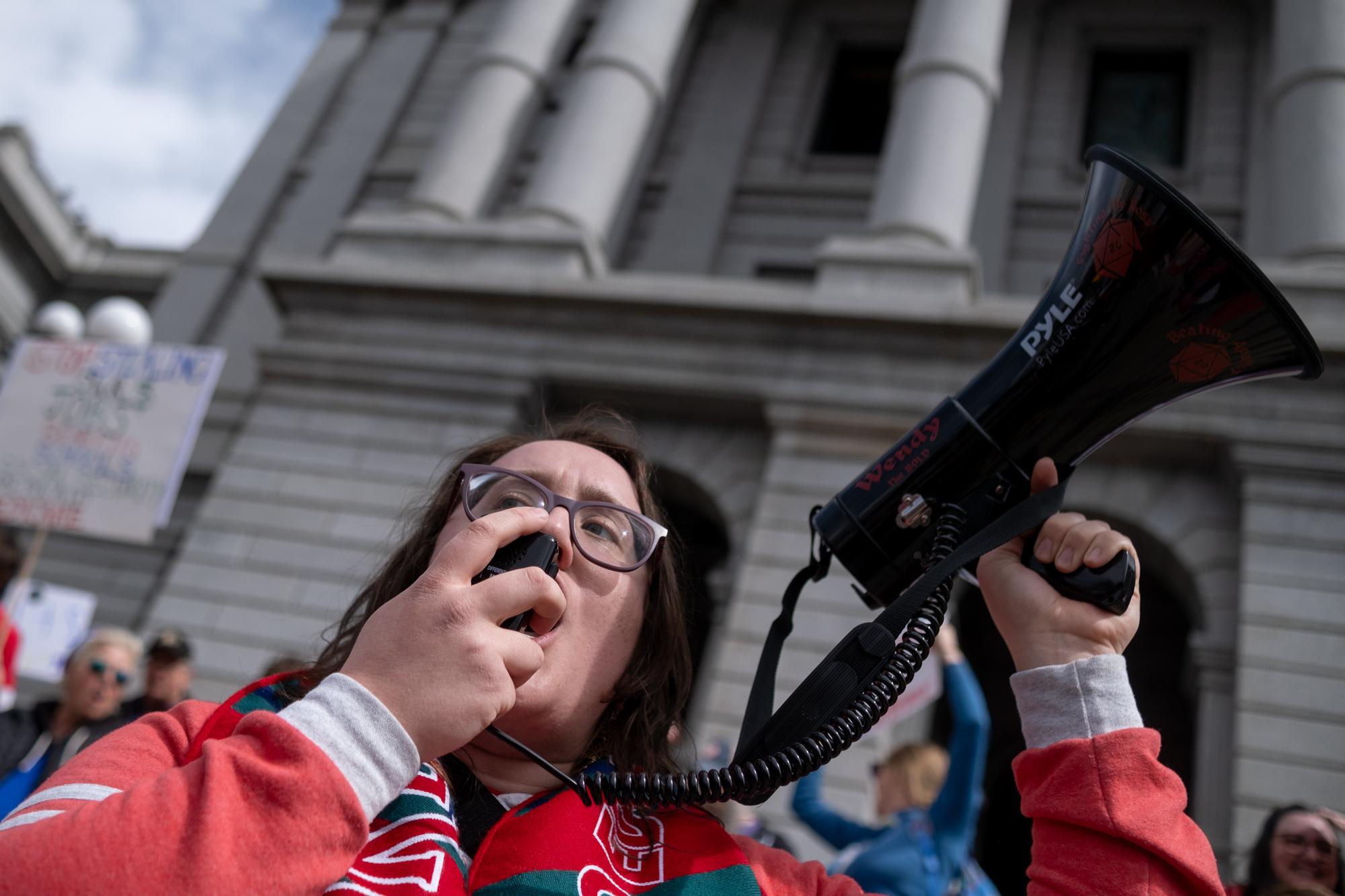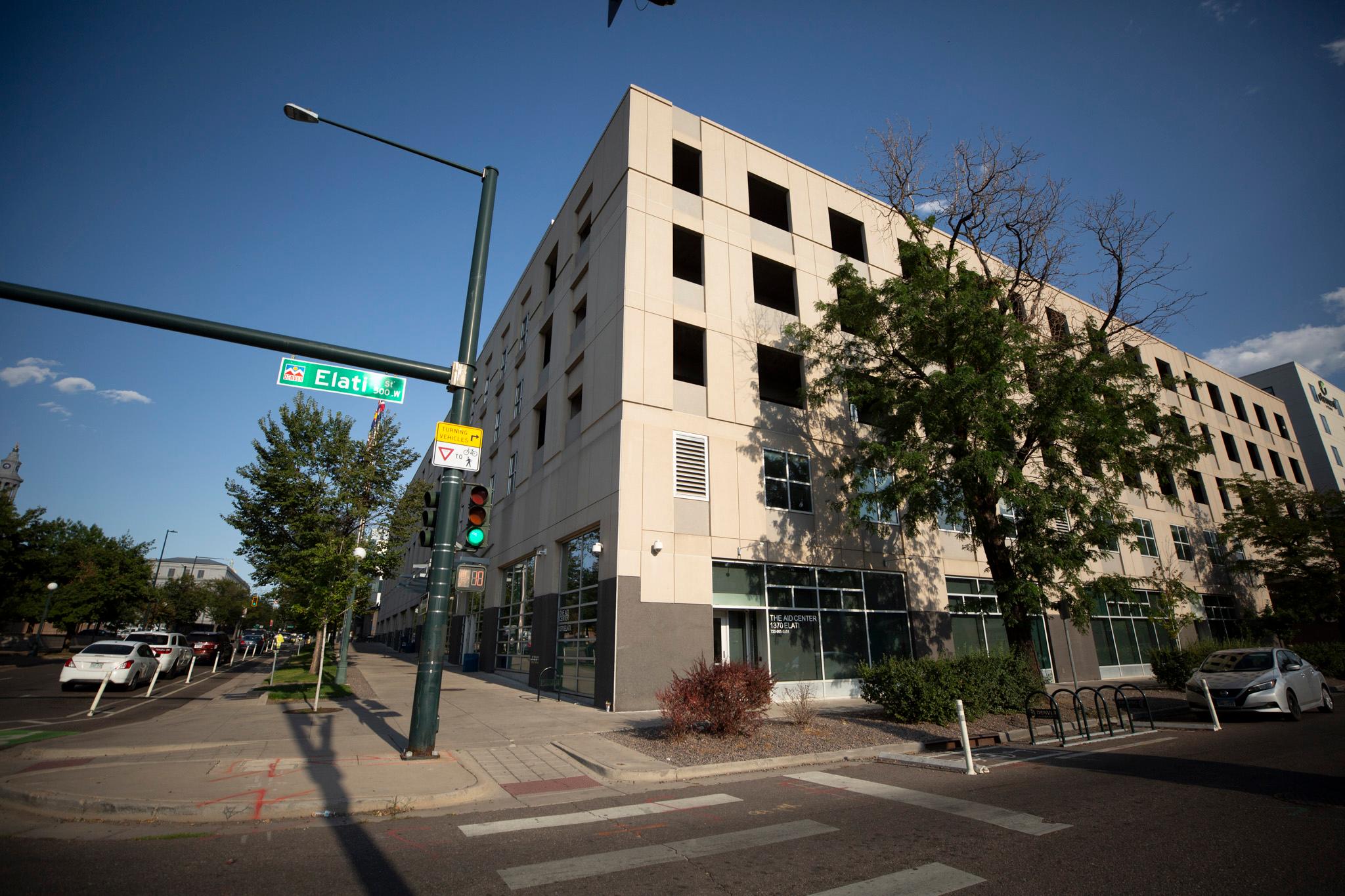On June 24, after months of negotiation and the introduction of a mediator, Denver Public Schools and its teachers’ union announced they had reached a tentative agreement for how local educators would be paid and managed for the next three years.
The new contract will affect everything from salaries to class sizes for almost 4,000 union members, starting Sept. 1. It includes a 2.55 percent across-the-board raise, a $1,000 cost-of-living adjustment and a $1,000 bonus for the coming school year. The union says the contract would provide a better learning environment, a safer workspace for teachers and better wages.
But it’s not a done deal yet. The Denver Classroom Teachers Association and DPS still have to convince the union’s members and the school board to approve the new contract — and some educators are rallying against it.
A petition urging teachers to vote against the ratification has collected 249 signatures. Educators have also commented that the negotiated cost-of-living adjustment is not enough to account for inflation, and some want the contract to set firm caps on class sizes.
“If we ratify this contract, we send a message that this is acceptable — that we’ll settle for less, again,” the petition states. “But we are not asking for luxury. We are demanding basic fairness: manageable class sizes, livable wages, and equitable support for all.”
The anonymous author of the petition didn’t respond to a request for comment.
Let’s talk about money.
Salary negotiations were a big part of the agreement, with the contract offering several boosts to pay.
All educators will get a 2.55 percent raise. That’s a result, in part, of changes made by the state legislature. A recent state law reduced the amount that DPS must contribute to PERA, the state’s retirement fund. The contract will put most of the savings into teachers’ salaries, instead.
The proposed contract includes an additional $1,000 per year for a cost-of-living adjustment (COLA), and a one-time bonus of $1,000 for the upcoming school year.
That’s in addition to the raises educators receive for gaining experience and education.
But some argued the COLA increase alone was not enough to cover inflation. Local prices rose 2.2 percent over the last year. And some pointed out that educators who had reached the top of the pay scale — $124,233 — could not get any more experience-related raises.
“I don’t have any more steps or lanes,” a special education teacher commented on the DCTA post announcing the agreement. “With inflation, I will actually have less money to spend on groceries this year.”
Teachers at the top of the scale are eligible for the COLA increase, the across-the-board raise and the one-time bonus.
Colorado ranked 24th among the states on teachers’ salaries for the 2023-2024 year, according to the National Education Association.
Lastly, the contract includes a memorandum of understanding encouraging the district to ask voters to approve more funding for DPS by November 2026. Negotiations on the contract could be reopened if the district secures more funding.
What else is in the proposed contract?
The new contract would expand the definition of “educator” to include “all certified, licensed, or authorized staff.” That might seem inconsequential, but the change would put more employees — such as career and technical educators — on the same salary schedules as traditional teachers.
The expanded definition includes specialized service providers, educational sign language interpreters (ESLIs), associate teachers, CTE Instructors, Balarat educators and JROTC instructors.
These groups are also now included in all financial negotiations. The contract also offers them benefits like the use of a “workload calculator.”
The calculator is a tool for jobs that are case-based. For example, special education teachers would use it to calculate how much time an individual student might require and balance that with how many students they are assigned. The tool is supposed to prevent burnout and encourage work sustainability.
“Our contract is over 50 years old and was originally intended for teachers only,” said Brian Weaver, co-chair for the DCTA’s bargaining team. “But by expanding that, we feel that we’re creating more protections for really the way modern public schools are functioning and the type of staffing needs that are required at schools.”
The new contract also addresses class sizes. But it doesn’t include the strict class cap that many teachers wanted.
Educators had argued that current class sizes of up to 35 students were unmanageable. Big classes limit the time teachers can give students for personalized learning, addressing mental health concerns, language barriers, supporting those with disabilities and catching up with pandemic learning losses.
The current cap — 35 students per class — was instituted in 1994 when the union went on strike. For the new contract, the union was hoping to lower the cap to 30 students. DPS data showed 9 percent of elementary classrooms had more than 30 students in the 2023-’24 school year.
The new contract doesn’t change the cap, instead settling for promises to “document efforts” to reduce overcrowding in classrooms. Whether these efforts are hiring more teachers, redistributing funds, or even expanding schools is unclear. It is up to the district to develop a plan and share it with the union.
“The district recognizes that it is a problem, which has never really occurred in the contract,” Weaver said. “But the best we could get out of them, was kind of the soft cap where they will be monitoring class sizes throughout the district and they will attempt to keep them at 30 students.”
The contract also creates a “Collaborative School Committee," which will review quarterly reports from the district on overcrowding. But the reports are only for grades K-5.
The CSC will include union members and DPS staff; it will produce yearly recommendations on overcrowding.
The documentation could provide extra leverage for contract renegotiations regarding class caps in 2028. Weaver explained that the acknowledgement from the district gives an opening for more “rigorous language” if no changes are made to class sizes.
What happens next?
Now, the DCTA members will vote to ratify or reject the agreement. If a majority of members approve the contract, it will go to the DPS board for approval.
If the proposal fails, the union and the district will go back to the negotiation table. If no agreement is reached before the contract expires Aug 31, the DCTA and its members could go on strike.
“Our members have the right to be unhappy with the contract and not vote for it,” Weaver said. “And that's part of being a democratic institution. So, they call the shots and if they don't like it, I will totally go back to the table and fight harder for whatever they want, but I'm not sure that we would get much more.”
DPS declined to comment.














